In search of magical capabilities on the Holyhead Road
Talking Birds' Janet Vaughan reports on "AI in the Street" activities in Coventry
This spring Talking Birds, a place-based theatre agency in Coventry, has been working with colleagues at the University of Warwick on the ‘AI in the Street‘ project, which is researching communities’ perspectives on, and feelings about, the AI-enabling infrastructure that lines our streets. The project aims to add citizen-voices into discussions about future infrastructure installation and invisible data gathering projects, whilst questioning how open and responsible the current processes are. Collaborative teams work in London, Cambridge, Edinburgh and Coventry, with the site of the Coventry Observatory being the Holyhead Road – which marks the border between Lower Coundon and Spon End.
When exploring AI-enabling infrastructure on the Holyhead Road, there’s an obvious overlap with surveillance: many of the devices that have popped up on lamposts are cameras collecting data that will be processed by AI’s “magical capabilities” and used in machine learning. This street is a test bed for autonomous vehicles (driverless cars) and so there are a number of sensors connected to that, in addition to CCTV cameras, Automatic Numberplate Recognition cameras, Air Quality sensors, and more.
Coventry Observatory Workshop
We gathered a group of 12 current or former residents of the Lower Coundon/Spon End area to take on the role of the Coventry Observatory on a gloriously sunny ‘peak-May’ day, convening at the Weaver’s House (a unique community-led restored medieval weaver’s cottage) before heading out on our Sensing Walk in smaller groups.

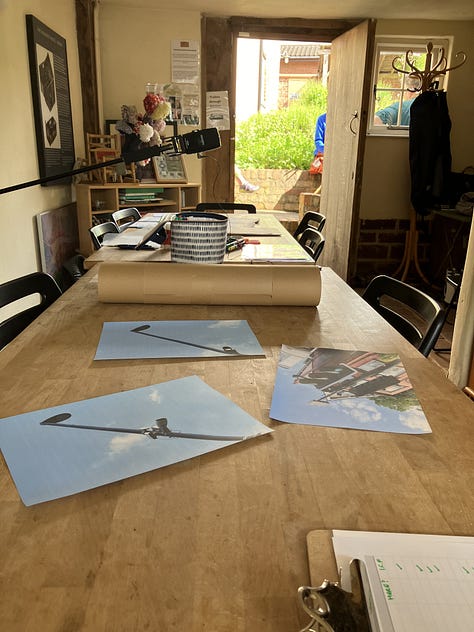
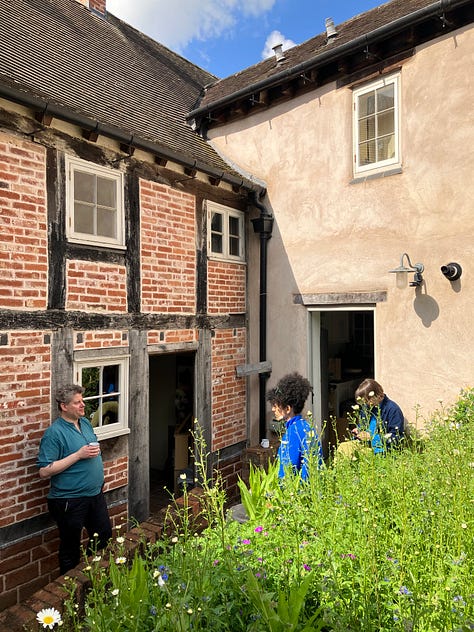
Each goup formed a multi-sensory organ and walked the environs using different senses – our bodies, our eyes and ears, the ‘Unheard City’ app sensor – to locate AI in the street. We made audio and voice recordings, sketched and noted down reminders of what we had sensed helped by a set of prompt questions.
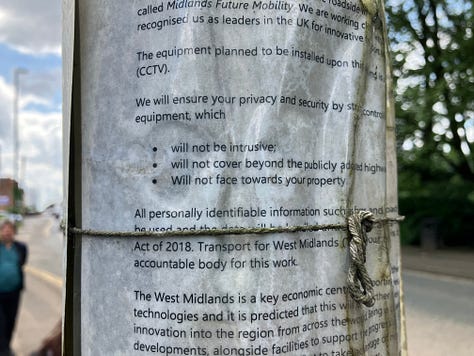
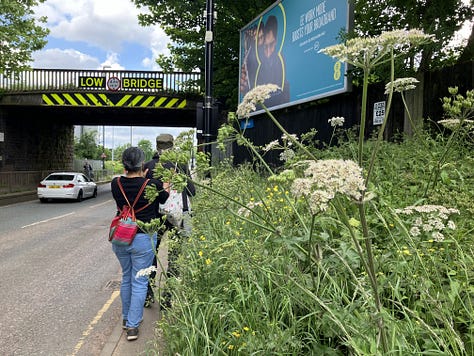
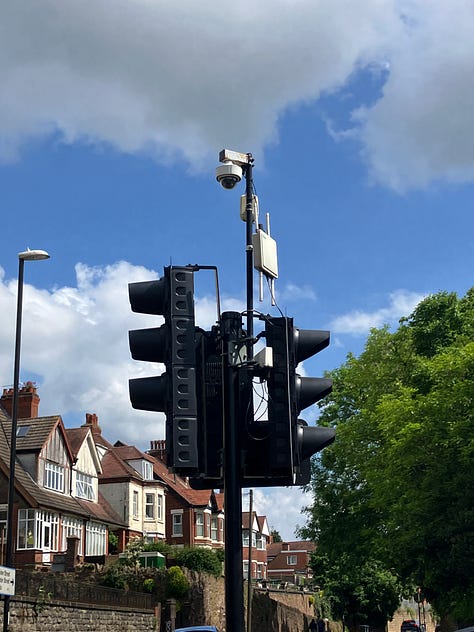
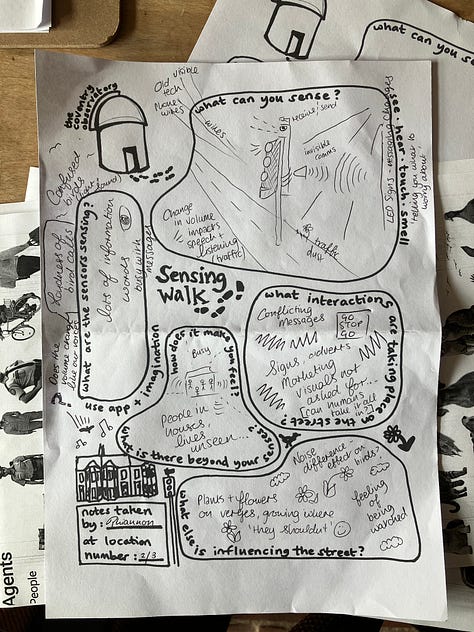
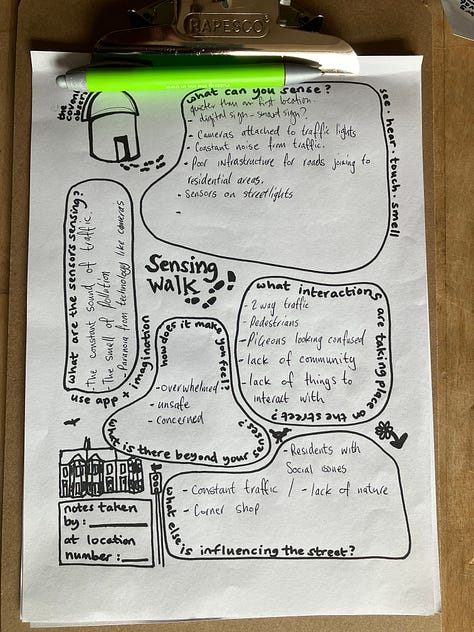

We used the data we had gathered to create a multi-faceted diagram of the Holyhead Road, and then narrated back to each other the stories recorded in our diagrams. All the while, we discussed the things we had sensed about the nature of AI in the street – how the infrastructure is hidden in plain sight, unnoticed, unremarked upon. We wondered how much our activities had drawn attention to the devices and sparked the curiosity of passers’ by. We thought about how the lack of explanatory signage provokes conspiracy theories, or a feeling of being exploited; of how CCTV makes some of us feel safe and others’ violated. We noticed how utterly overwhelming the volume of the traffic noise is and yet, in lulls, how restorative that we can hear swifts and starlings. We talked about how nature senses new ways of being in this environment, and how starlings mimic car alarms. We talked about how the artist Turner stood at the top of this street 200 years ago, to gather the (sketched) data to later make a painting of the city. We noted that an air quality sensor is sited opposite a row of mature London Plane trees, with their own magical capabilties to absorb air pollution and transform then shed it within their leaves and bark…
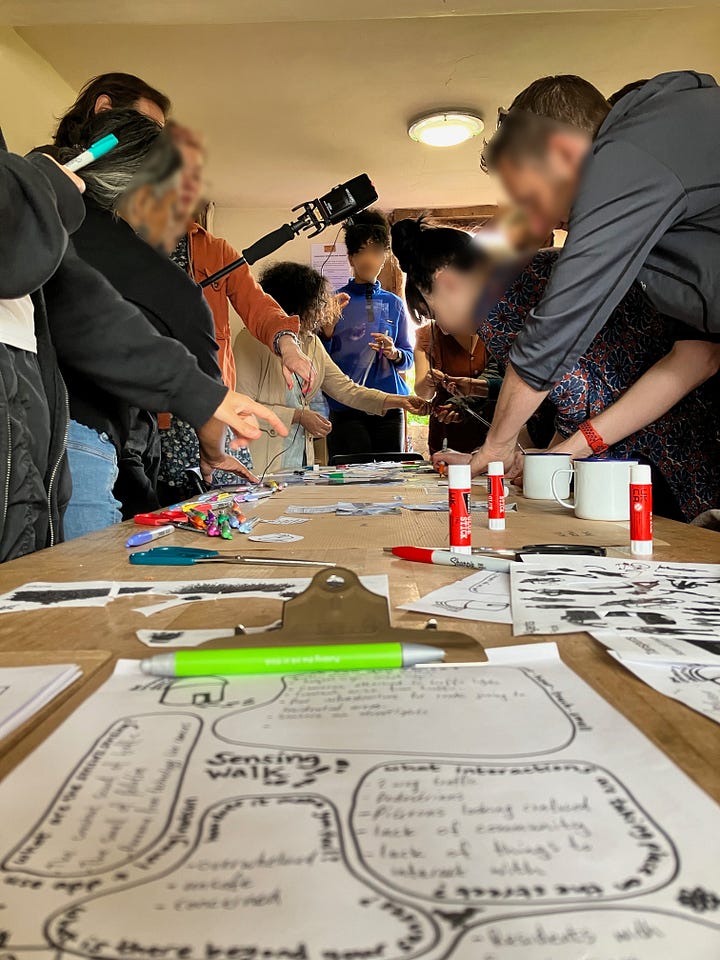


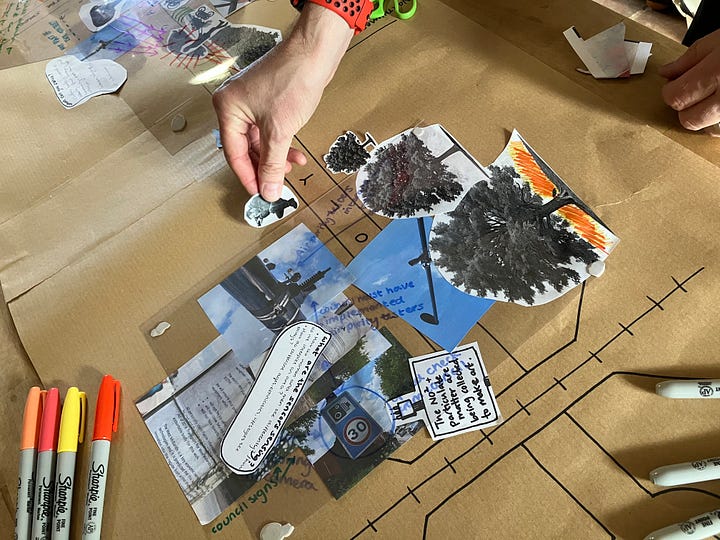
To close the session, Derek played “a bird’s eye of the street”, his hot-off-the-press sound composition combining audio recorded on the sensing walks with some specially written music. A blackbird sitting on the Weaver’s House’s chimneystack also joined in with some well-timed vocals. Huge thanks to all of our participants (Akeel, Carol, Charlie, Dana, Ian, Lisa, Matt, Nirmal, Rhiannon, Sanjay, Steve, and Winter) for making the workshop so fruitful and so enjoyable with their interesting insights and generous, thoughtful contributions.

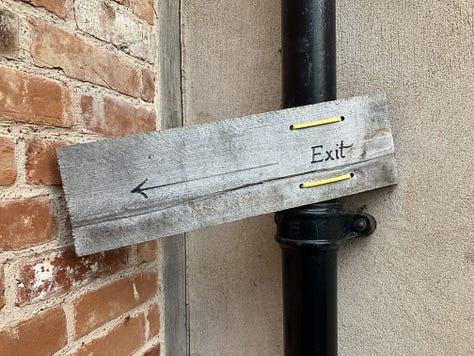
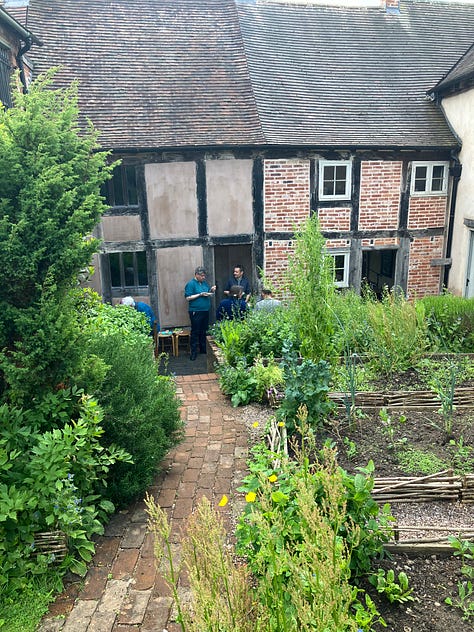
The cross-disciplinary Coventry Observatory research team who put this workshop together consists of Noortje Marres, Iain Elmsley and Yasmin Boudiaf from Warwick University, and Derek & Janet from Talking Birds.
Postscript: we asked WordPress’s AI Assistant for suggestions to improve this post. It couldn’t come up with another title, so we’re guessing that it approves of the one we chose – but this was it’s suggestion on how to make the post better:
“Training machines to predict and automate based on the patterns of prior human experience can create outputs that border on the magical. Yet the dirty truth is that it is built on the stolen work of those whose behaviour it seeks to replicate. Whether you’re a Hollywood star, a writer, a teacher, a health worker or a truck driver, your labour is both the raw input and the end target of this technology. According to the latest Guardian Essential report, the public response to AI is almost completely at odds with industry hype, with twice as many of us seeing the risk of AI outweighing the opportunities compared with those who think the inverse.” Peter Lewis, writing in The Guardian on June 3, 2024.
This post was previously published in the Talking Bird’s Words from the Birds.




